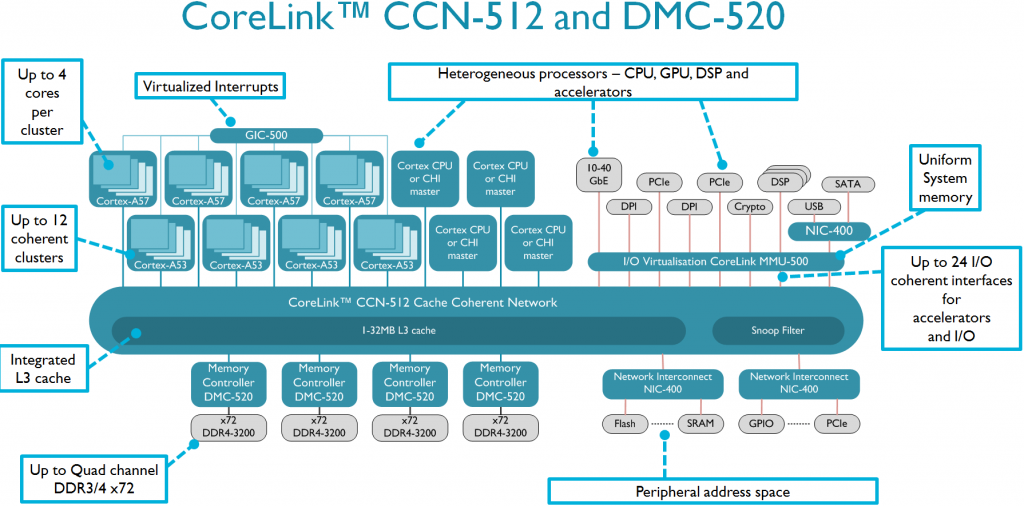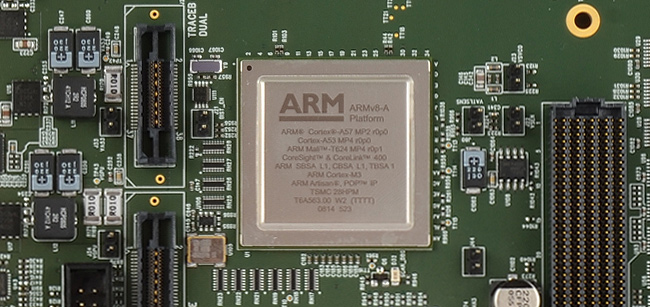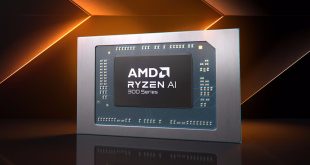The U.S. government recently banned sales of Xeon Phi co-processors for high-performance computing applications to numerous supercomputer sites in China, slowing down development of local research. But perhaps, China will not need any HPC chips from the world’s renowned suppliers in the future as domestic companies are developing a number of promising microprocessors.
Phytium, a startup processor developer from Guangdong, China, is working on a special 64-core central processing unit specifically designed for high-performance computing applications. The company is going to present the supercomputer chip at the Hot Chips technology conference in August, which indicates that the CPU is either ready and is about to be released, or its development is largely completed.
Nothing particular is known about Phytium’s upcoming CPU. The company itself describes it as “a 64-core ARMv8 processor for HPC”, which essentially means that this is 64-bit with many cores. However, this product is not that simple. In fact, Phytium’s CPU appears to be a highly-custom supercomputer chip that contains a lot of truly innovative technologies developed in-house.
Modern ARM cores allow to build SMP [symmetric multiprocessing] quad-core clusters as well as create many-core chips featuring up to 12 coherent SMP processor clusters through CoreLink CCN, AMBA 5 CHI, AMBA 4 ACE as well as other technologies. The total number of cores within a modern ARMv8-A system-on-chip cannot exceed 48 units if the SoC designers uses off-the-shelf technologies designed by ARM. Developers, who plan to integrate more than 48 ARM Cortex-A57 or ARM Cortex-A72 chips, will have to design their own high-speed on-chip ring-bus communication and interconnection technologies that support higher amount of processing engines (which may involve redesign of SMP clusters and necessity to develop special commutators for every cluster, or a group of cores, depending on exact approach to design).

Many-core chips also require sophisticated memory controllers and extreme memory bandwidth (i.e., they need to feature multiple controllers that can support high-speed memory). Such memory sub-systems are hard to design. ARM offers quite advanced DMC-520 controllers with enterprise-class class RAS (reliability, availability and serviceability) features such as ECC for x72 DRAM, TrustZone security and end to end Quality of Service (QoS). Unfortunately, the DMC-520 in the current implementation supports up to quad-channel DDR4 3.20GHz memory providing up to 102.4GB/s of bandwidth, which may not be enough for a 64-core HPC processor. It should be possible to install more than four DMC-520 controllers inside a chip, but it requires a lot of additional work. Developers of ARMv8-A-based processors for server and HPC applications, such as AMD or Cavium, use dual-channel or quad-channel memory controllers for their Opteron 1100A “Seattle” and ThunderX system-on-chips.
Apparently, Phytium has managed to design an advanced ring-bus interconnect technology, a custom L3 cache sub-system with snoop filter, a sophisticated memory sub-system and a lot of other unique things necessary for many-core microprocessors.
Unfortunately, nothing particular is known about the cores that Phytium plans to use inside its 64-core HPC chip. It is possible that the company will use off-the-shelf ARM cores, such as Cortex-A57, but it is also possible that the company has created a custom implementation of ARMv8 architecture. If the company is designing its chip for supercomputers, it has to be competitive against things like Intel Xeon Phi or Nvidia Tesla, hence, we are talking about ~0.5~1.0 TeraFLOPS-class double precision floating point performance per processor. It is, of course, possible that the chip will be slower because of architecture limitations or design trade-offs (power vs. throughput).
Phytium is not the only Chinese developer working on microprocessors for supercomputers. However, it will be the only CPU developer from China to present at this year’s Hot Chips conference. Since the symposium is about leading-edge technologies, it is logical to assume that Phytium is to unveil something very advanced.
Phytium is a part of Guangzhou Higher Education Mega Center, an area featured by higher education institutions, located on Xiaoguwei Island in Panyu District, Guangzhou, China.
Discuss on our Facebook page, HERE.
KitGuru Says: Perhaps, performance of the Phytium chip will not impress in terms of performance. Nonetheless, considering the amount of challenges the company needed to solve to develop a 64-core ARMv8-A processor today, the developer deserves a praise.
 KitGuru KitGuru.net – Tech News | Hardware News | Hardware Reviews | IOS | Mobile | Gaming | Graphics Cards
KitGuru KitGuru.net – Tech News | Hardware News | Hardware Reviews | IOS | Mobile | Gaming | Graphics Cards




< col Hiiiiiii Friends….uptil I saw the paycheck saying $8736 , I have faith that my neighbour woz actualy receiving money parttime from their computer. . there friends cousin has done this 4 only about thirteen months and by now repaid the loans on there mini mansion and got a great GMC . visit their website SEE FULL DETAIL
~~~~~~~~~~~~~~~~~~~~~~~~~~~~~~~~~~~~~~~~~~~~~~~~~~~~~~~~~~~~~~~~~~~~~~~~~~~~~~~~~~~~~~~~~~~~~~~~~~~~~~~~~~~~~~~~~~~~~~~~~~~~~~~~~~~~~~~~